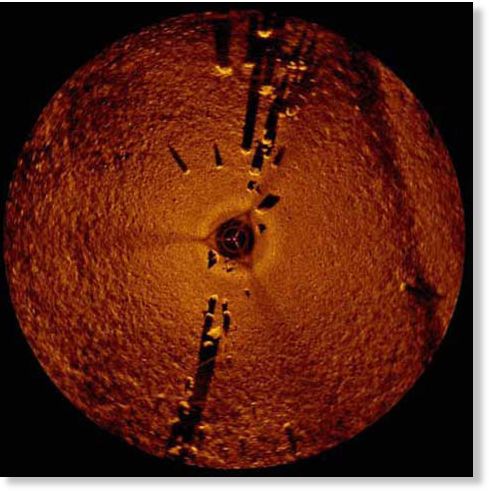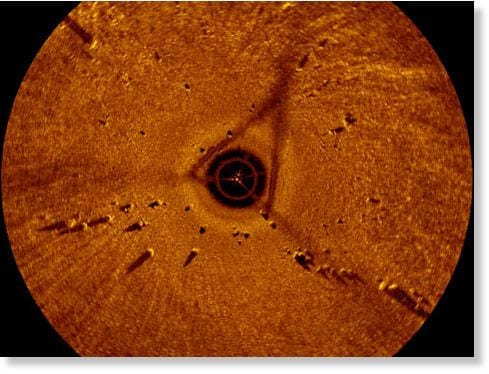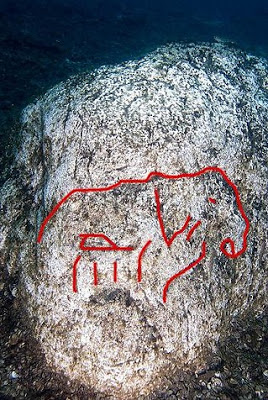A Possible Stonehenge Discovered Under Lake Michigan

A Possible Stonehenge Discovered Under Lake Michigan
While scanning underneath the waters of Lake Michigan for shipwrecks, archaeologists found something a lot more interesting than they bargained for, as they discovered a boulder with a prehistoric carving of a mastodon, as well as a series of stones arranged in a Stonehenge-like manner.
At a depth of about 40 feet into Lake Michigan’s Grand Traverse Bay, using sonar techniques to look for shipwrecks, archaeologists discovered sunken boats and cars and even a Civil War-era pier, but among all these, they found this prehistoric surprise, which a trained eye can guess by looking at the sonar scans photos in this article.

“When you see it in the water, you’re tempted to say this is absolutely real,” said Mark Holley, a professor of underwater archaeology at Northwestern Michigan University College who made the discovery, during a news conference with photos of the boulder on display in 2007. “But that’s what we need the experts to come in and verify.”

The site predates the ice age, as we believe it is the glaciers that caused the great lakes. This means that North America also has its share of old human history.

In 2007, Mark Holley, professor of underwater archaeology at Northwestern Michigan College, discovered a series of stones arranged in a circle 40 feet below the surface of Lake Michigan.
One stone outside the circle seems to have carvings that resemble a mastodon—an elephant-like animal that went extinct about 10,000 years ago.

Archaeologists had been hired to survey the Lake’s floor near Traverse City, Michigan, and examine old boat wrecks with a sonar device.
They discovered sunken boats and cars and even a Civil War-era pier. But among these expected finds was a potentially-prehistoric surprise.
“When you see it in the water, you’re tempted to say this is absolutely real,” Holley told reporters at the time. “But that’s what we need the experts to come in and verify.”
Specialists involved in the case are sceptical and want to gather more info before making a judgment. The problem?
“They want to actually see it,” said Holley. “Experts in petroglyphs generally don’t dive, so we’re running into a bit of a stumbling block there.”
The formation, if authenticated, wouldn’t be completely out of place. Stone circles and other petroglyph sites are located in the area.
While Chicago has an interesting and colourful history of its own, it’s exciting to think that a North American version of Stonehenge could be sitting just over 200 miles away.